These happy chicks are three days old today. Ever since they hatched, they have been showered with love and attention 24 hours a day. They are now well bonded with their mother and stay close to her, watching her every move, and mimicking what she does.
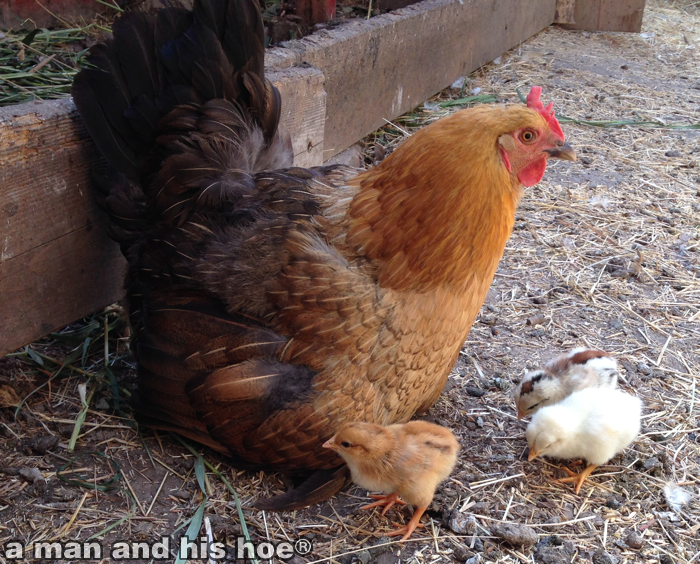
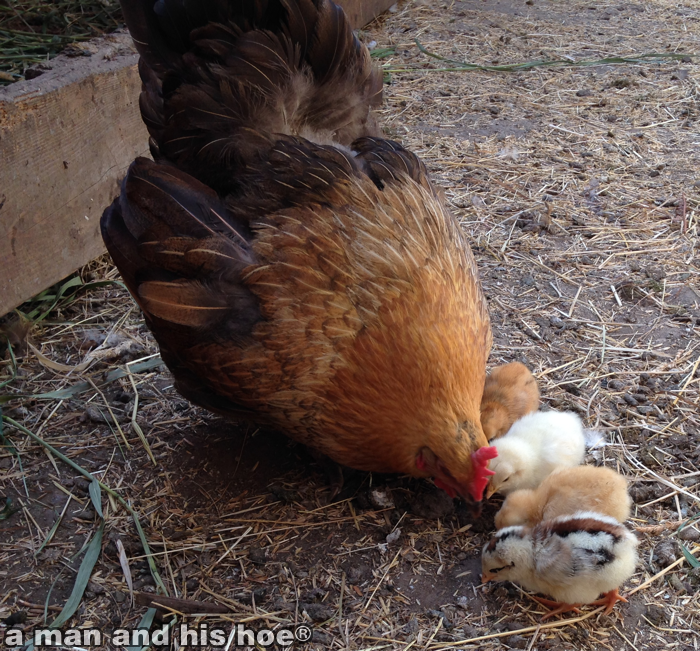

Tag: Humanely raised chicken
-
3 Days of 24 Hour Love
-
How Apple Pie Starts
This is how apple pie starts – as a small flower. It’s late April and the apple trees are blooming several weeks early. Soon, wild bees will pollinate these flowers, and all summer long the apples will soak in the sunshine and grow until they are ready, in early fall, to be eaten right off the tree or made into apple pie. From now into fall, the air buzzes with the sound of wild bees. According to Wild Bees as Alternative Pollinators, by the Penn State:Fruit Research and Extension Center, there are “3,500 bee species other than the honey bee which are also important pollinators of most specialty crops in the U.S.” 80% of bees are ground nesting, so it’s critical to have undisturbed land to provide habitat for these bees to thrive.
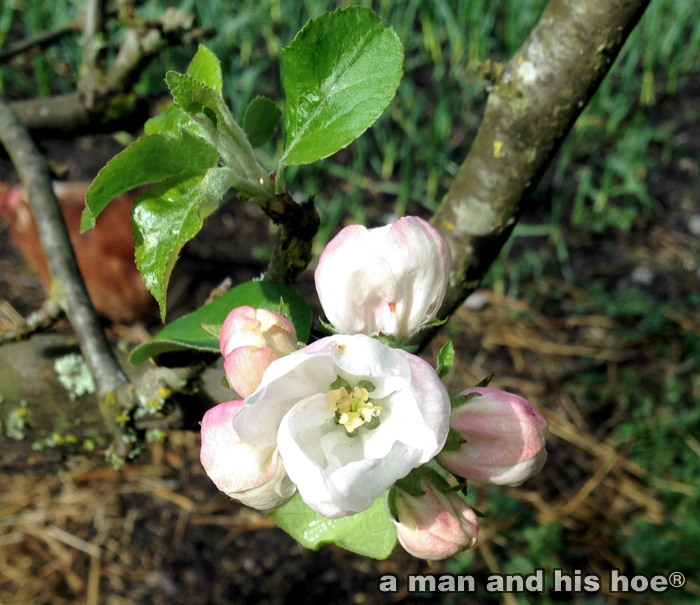
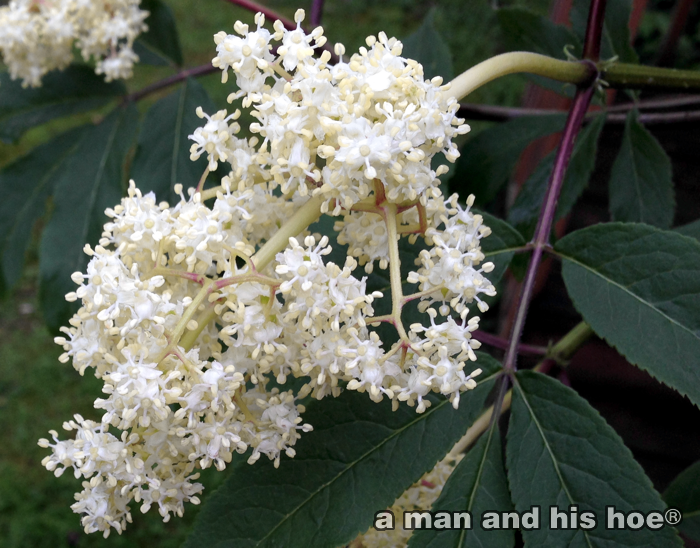
The elderberry bushes are also in full bloom. Come June, they will provide plenty of red fruits for wild birds to eat.
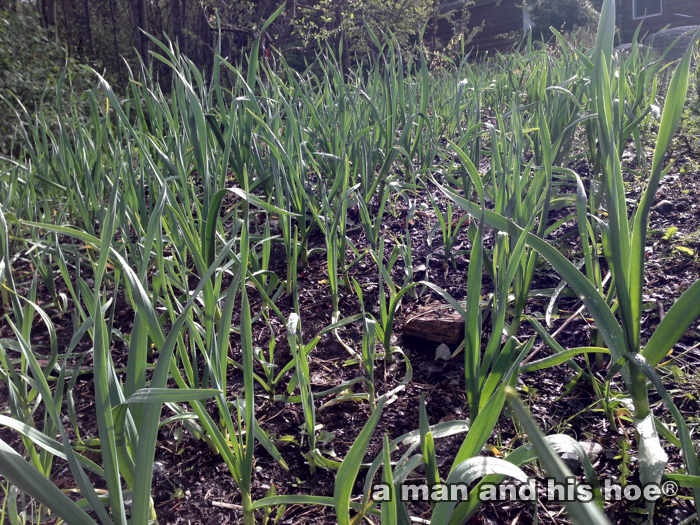
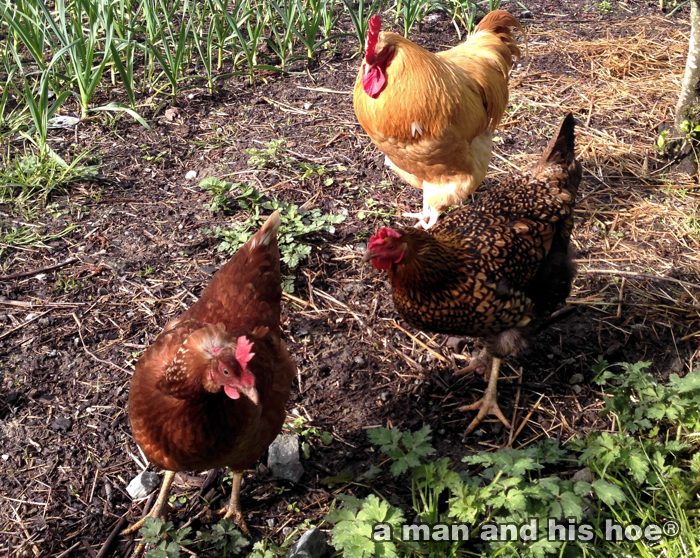
The garlic patch is nearly knee high. Lucky, Billy, and Imelda are looking for something to eat along the edges of the garlic patch. Lucky is the most curious hen at a man and his hoe®. No matter where we go, she is sure to come along to see what we are doing. And Imelda seems to have been smitten with Billy, the five year old rooster. Wherever he goes, she follows. At a typical egg or poultry farm, hens and roosters never get to develop these romances. It’s one of the benefits of being a chicken at a man and his hoe®.Articles on wild bees:
- Wild bees make honey bees better pollinators – UCBerkeleyNews
- Wild bees enhance honey bees’ pollination of hybrid sunflower Sarah S Greenleaf and Claire Kremen – Proceedings of the National Academy of Sciences of the USA
- Attracting wild bees to farms is a good insurance policy Michigan State University
- Wildflowers and natives to attract bees and pollinators
- The Other Bees by Kristin Ohlson in modern farmer
-
Transitions
The gang of 5 chicks born March 25 are nearly a month old and spending more time away from their mother. This afternoon I found them resting together, their mother happily feeding by herself.
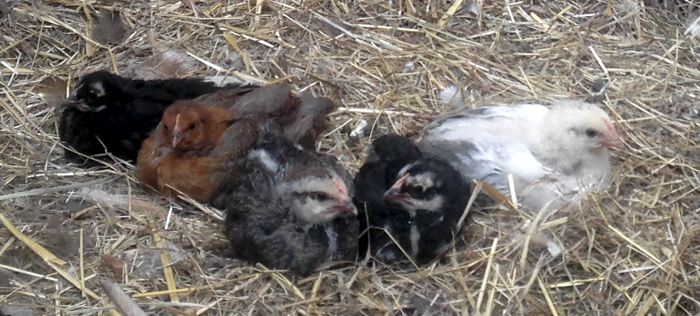
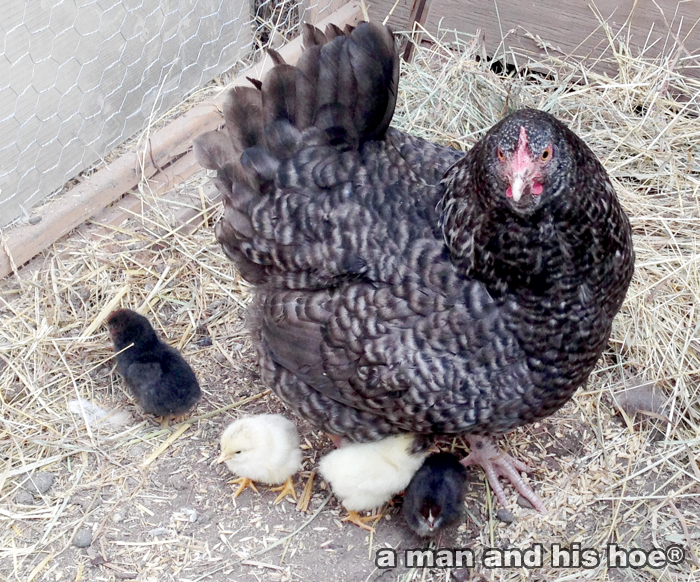
While these one day chicks, born on Easter, are getting their first taste of life outside the nest. They have a very feisty mother. In fact the most protective hen I’ve seen. It will be interesting what sort of mother she turns out to be. The variety of personalities even among hens is remarkable. Here at a man and his hoe®, the chickens have the space and freedom to let their personalities bloom. -
First Post Child Rearing Egg
Hens lay special eggs at times. There is the very first egg they lay, which is a tiny egg. There is the first egg they lay after their winter lull. These eggs also tend to be smaller. And then there is the first egg they lay after raising chicks. And today this mother laid her first egg after raising chicks for three weeks. That is on the early side. Most hens take more than a month before they go back to laying eggs.
I get the sense that this mother may not be raising her chicks much longer. They are getting very independent and at times during the day they stray tens of feet from her. When she was up on the nest laying her egg, her five chicks huddled together and waited patiently for her to come back down.
